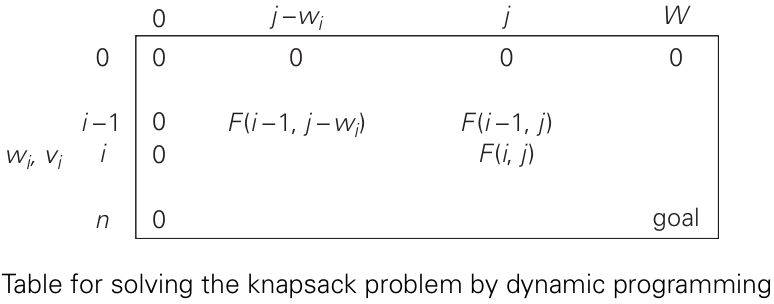Paradigm
Backtracking
Backtracking can be applied only for problems which admit the concept of a "partial candidate solution" and a relatively quick test of whether it can possibly be completed to a valid solution.
When it is applicable, however, backtracking is often much faster than brute-force enumeration of all complete candidates, since it can eliminate many candidates with a single test.
It is convenient to implement this kind of processing by constructing a tree of choices being made, called the state-space tree. Its root represents an initial state before the search for a solution begins.
For backtracking, the tree is usually developed depth first.
-
Resources
- Addison-Wesley - Introduction to the Design and Analysis of Algorithms.3rd Edition.Oct.2011 - 12.1 Backtracking
Sorting
Bubble Sort
- Runtime:
O(n^2)average and worst case - Memory:
O(1) idecides the element currently being sorted.- Starting from the beginning will get a list sorted in ascending order.
- Starting from the end will get a list sorted in descending order.
Selection Sort
- Runtime:
O(n^2)average and worst case - Memory:
O(1) - Find the smallest element in the unsorted part and swap it with the first element of the unsorted part.
Insertion Sort
- Runtime:
O(n^2)average and worst case - Memory:
O(1) - Insert the marked element of each iteration into the partially sorted list.
- Shift sorted elements to make room
- In-place
- Stable
Shell Sort
- Determine the gap sequence is the key, use Knuth's sequence by default, as it's easy to generate:
gap = (Math.pow(3, i) - 1) / 2 && gap < N / 3 - Unstable
- For each gap size, use gapped
Insertion Sort
Merge Sort
-
Runtime:
O(nLogn)average and worst case -
Memory:
O(n) -
Algorithm
- Split the input in half recursively until cannot be further split
- Merge the elements in sorted order and store them in the new space
- Repeat this process with different input range until it covers the whole input
-
Merge
- The heart of the
mergesortalgorithm is the merging of two already-sorted arrays. - One extra array is needed to store the temporary and final result.
- The heart of the
-
Pros
O(nLogn)
-
Cons
- Extra space proportional to
N - Slow for small input size
- It goes through the whole process even if the array is sorted.
- Extra space proportional to
-
Application
- Useful for sorting linked lists in
O(nLogn)time, as it doesn't require random access.
- Useful for sorting linked lists in
Radix Sort / Bucket Sort
-
Challenges
-
How to store elements in buckets?
- Use
ArrayListorLinkedListto store elements in buckets. Dutch National Flagproblem (opens in a new tab) (3-way partitioning)
- Use
-
LSD Radix Sort
- Requires a stable sorting subroutine
- Suitable for fixed-length strings
MSD Radix Sort
Counting Sort
Pseudo code
-
Assignment
a := 1 -
Use
identationinstead ofbraces -
Trace table for loop
for i := 1 to 4 x := i * i next iVariable / After each iteration 0 (Before loop starts) 1 2 3 4 x1 4 9 16 i1 2 3 4 5
Runtime Analysis
- Use
-Xintto turn off JIT and AOT compilation and use interpretation only.
Dynamic Programming
- Deriving a recurrence relating a solution to the problem to solutions to its smaller subproblems.
Knapsack Problem


Implementation
Java
- Use
System.arraycopymethod for array shifting and moving. - Use
Arrays.copyOfmethod for array copying.